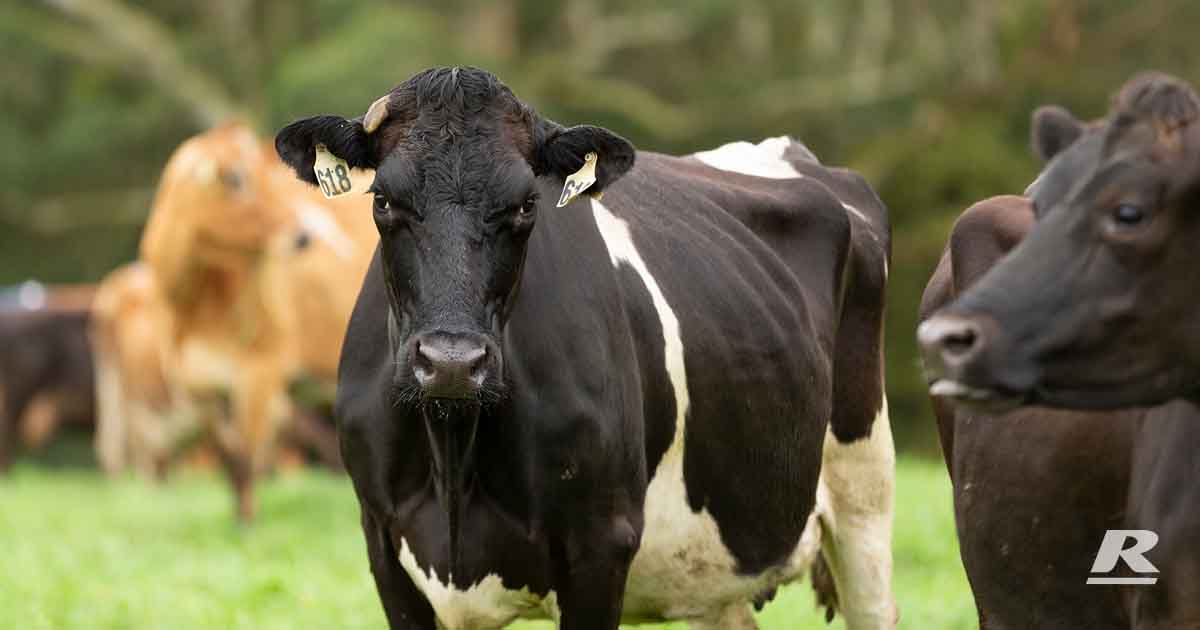Understanding and Managing High Milk Urea Nitrogen (MUN) for Dairy cows during Autumn
As autumn approaches in Australia, dairy farmers face unique challenges in maintaining herd health and productivity. High levels of milk urea nitrogen (MUN) during this season can indicate dietary imbalances and have significant implications for milk production and reproductive efficiency.

Origins of High Blood and Milk Urea Nitrogen
Autumn brings changes in forage availability and quality, influencing dietary protein and carbohydrate sources. Excessive rumen degradable protein (RDP) from transitioning pastures, NPN sources including Urea and RDP of protein meals can lead to increased ammonia production, contributing to elevated MUN levels. Environmental factors such as temperature fluctuations and reduced pasture quality further exacerbate this imbalance.
Challenges of High RDP and Effects on Reproductive Parameters
High RDP levels during autumn can negatively impact reproductive parameters. Research by Australian Dairy Herd Improvement Scheme (ADHIS) found that cows with elevated MUN levels during autumn had lower conception rates and increased incidences of prolonged open days, leading to reduced profitability for dairy farms.
Concerns in Early Lactation Cows During Autumn
Early lactation cows are particularly susceptible to metabolic and reproductive challenges during autumn. Fluctuations in pasture composition and reduced nutrient availability can exacerbate metabolic disorders such as ketosis and acidosis, further compromising reproductive performance. Dairy Australia’s Dairy Base analysis indicates that cows experiencing metabolic disorders during autumn have a 20% lower conception rate during subsequent breeding periods.
Additional Factors Contributing to High MUN Levels
Autumn dietary changes can also impact feed efficiency and starch utilization in dairy cattle. Reduced pasture quality and availability may lead to suboptimal nutrient intake, resulting in decreased milk production and increased metabolic stress. Furthermore, excess dietary starch from supplementary feeds can exacerbate MUN levels, contributing to rumen acidosis and impaired reproductive function.
Costs of High MUN to Dairy Farms During Autumn
The costs imposed by high MUN levels on dairy farms during autumn can be significant. Dairy Australia’s Farm Monitor Project indicates that dairy farms experience an additional AUD 50-100 per cow annually in AI costs, veterinary expenses, and lost productivity associated with elevated MUN levels during autumn. These costs include increased AI attempts, extended open days, and higher incidences of metabolic disorders, ultimately impacting farm profitability and sustainability.
Strategies to Minimize High MUN and Optimize Milk Production During Autumn
- Balanced Ration Formulation: Collaborate with a nutritionist to adjust ration formulations based on autumn pasture composition and quality. Aim for MUN levels below 12-14 mg/dL by incorporating bypass proteins and optimising rumen health through proper forage management.
- Dietary Adjustments: Monitor MUN levels weekly during autumn, adjusting protein sources and levels as needed to mitigate imbalances. Incorporate high-quality forages and strategically supplement with bypass proteins to maintain optimal rumen function and support reproductive health.
- Monitoring and Management: Implement a MUN monitoring program during autumn, measuring levels every 1-2 weeks to detect and address dietary imbalances promptly. Utilize MUN levels as an early warning indicator of metabolic stress, with elevated levels prompting further investigation and intervention.
- Breeding Strategies: Select sires with proven fertility and metabolic health traits suited to autumn conditions in Australia. Implement timed AI protocols and genomic selection to optimize conception rates and reduce the impact of metabolic disorders on reproductive performance during autumn.
Autumn brings unique challenges for dairy farmers in Australia, with changes in pasture composition and quality influencing MUN levels and reproductive parameters. By implementing targeted management strategies tailored to autumn conditions, farmers can mitigate the risks associated with high MUN levels, optimise milk production, and ensure the long-term sustainability of their dairy operations.
For personalised insights into optimising your herd’s nutrition and pasture management, consult with the experts at Reid Stockfeeds. Our team is dedicated to assisting you in making informed decisions for the well-being and productivity of your cows. Contact us today to explore our range of high-quality feed products and discover tailored solutions that align with your farm’s goals. Call 1300 REID FEED or enquire here >
Author
Sadegh Mirghaffari
Senior Nutritionist